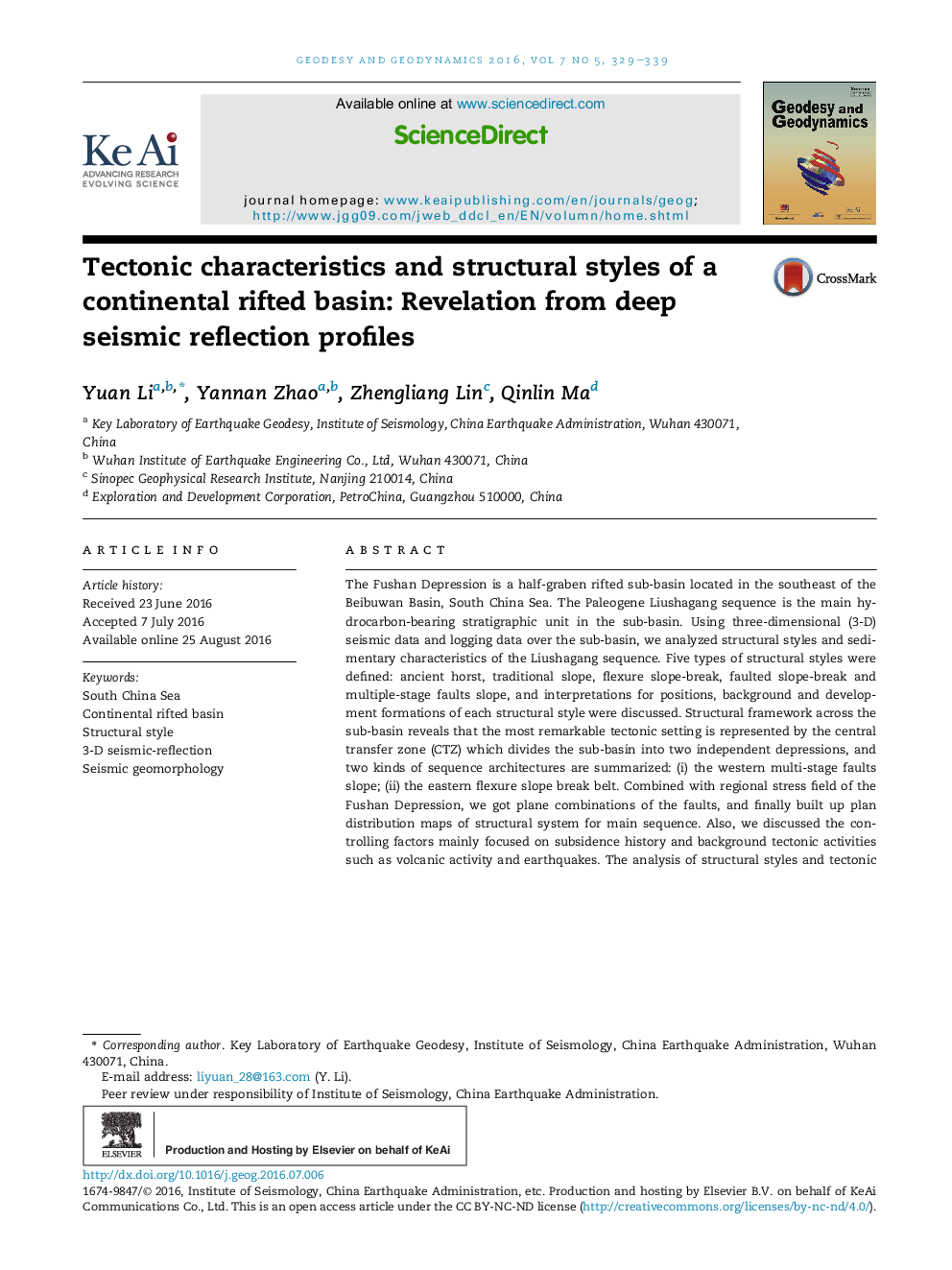| Article ID | Journal | Published Year | Pages | File Type |
|---|---|---|---|---|
| 4683478 | Geodesy and Geodynamics | 2016 | 11 Pages |
The Fushan Depression is a half-graben rifted sub-basin located in the southeast of the Beibuwan Basin, South China Sea. The Paleogene Liushagang sequence is the main hydrocarbon-bearing stratigraphic unit in the sub-basin. Using three-dimensional (3-D) seismic data and logging data over the sub-basin, we analyzed structural styles and sedimentary characteristics of the Liushagang sequence. Five types of structural styles were defined: ancient horst, traditional slope, flexure slope-break, faulted slope-break and multiple-stage faults slope, and interpretations for positions, background and development formations of each structural style were discussed. Structural framework across the sub-basin reveals that the most remarkable tectonic setting is represented by the central transfer zone (CTZ) which divides the sub-basin into two independent depressions, and two kinds of sequence architectures are summarized: (i) the western multi-stage faults slope; (ii) the eastern flexure slope break belt. Combined with regional stress field of the Fushan Depression, we got plane combinations of the faults, and finally built up plan distribution maps of structural system for main sequence. Also, we discussed the controlling factors mainly focused on subsidence history and background tectonic activities such as volcanic activity and earthquakes. The analysis of structural styles and tectonic evolution provides strong theoretical support for future prospecting in the Fushan sub-basin and other similar rifted basins of the Beibuwan Basin in South China Sea.
